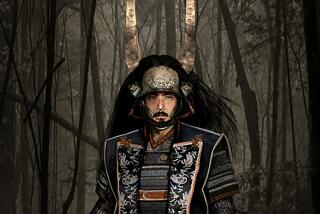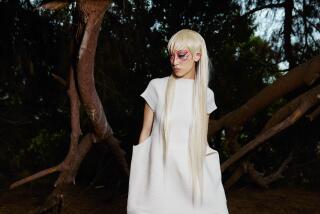WHEN ART BECAME FASHION : Kosode in Edo-Period Japan <i> By Dale Carolyn Gluckman and Sharon Sadako Takeda, with other contributors (Weatherhill / LACMA: $60; 350 pp.) </i>
- Share via
They were the designer dresses of their time--a time when clothes really counted.
It was the Edo Period in Japan, 1615-1868, a time of rare peace and prosperity. The merchants, lowest of all hierarchal classes (beneath Samurai, farmers and artisans), finally were able to afford the luxurious garments that had adorned their “betters”; the kosode (a narrow-sleeved robe) was the emblem of not only material wealth but of artistic sensibility as well.
“When Art Became Fashion” focuses on the kosode --harbinger of the modern kimono--and is published in conjunction with the L.A. County Museum of Art’s exhibition of the exquisite robes-cum-status symbols.
Since the kosode was cut in a simple T-shape, its surface could be decorated much like a painting or a hanging scroll. The more design elements, the higher the wearer’s social standing. Well-educated women of the Samurai class would wear designs with references to classical literature (as “The Tale of Genji”) or to Noh drama plays. Other motifs centered about the four seasons, famous places, poetry, calligraphy.
The shogunate attempted to restrict such extravagance and ensure appropriate class display by passing sumptuary laws regulating color, cost, materials, design techniques; needless to say, women--especially courtesans and wealthy townswomen--found ways to circumvent the laws.
More to Read
The biggest entertainment stories
Get our big stories about Hollywood, film, television, music, arts, culture and more right in your inbox as soon as they publish.
You may occasionally receive promotional content from the Los Angeles Times.










